Grow ginger at home, you say? Absolutely! Imagine stepping into your kitchen and snipping off a piece of fresh, zesty ginger, grown right in your own backyard (or even on your windowsill!). No more last-minute grocery store runs when your favorite recipe calls for that spicy kick. This isn’t just about convenience; it’s about connecting with nature and experiencing the satisfaction of nurturing something from rhizome to harvest.
Ginger, with its rich history spanning millennia, has been treasured for its culinary and medicinal properties across various cultures. From ancient Ayurvedic practices to traditional Chinese medicine, ginger has been a staple for soothing ailments and adding flavor to dishes. Now, you can tap into this ancient wisdom and cultivate your own supply!
But why should you bother with growing ginger at home? Well, store-bought ginger can sometimes lack the vibrant flavor of freshly grown rhizomes. Plus, let’s be honest, who doesn’t love a good DIY project? This guide will provide you with simple, easy-to-follow tricks and hacks to successfully grow ginger at home, regardless of your gardening experience. I’m excited to share these tips with you, so you can enjoy the freshest, most flavorful ginger possible, all while adding a touch of green to your living space. Let’s get started!
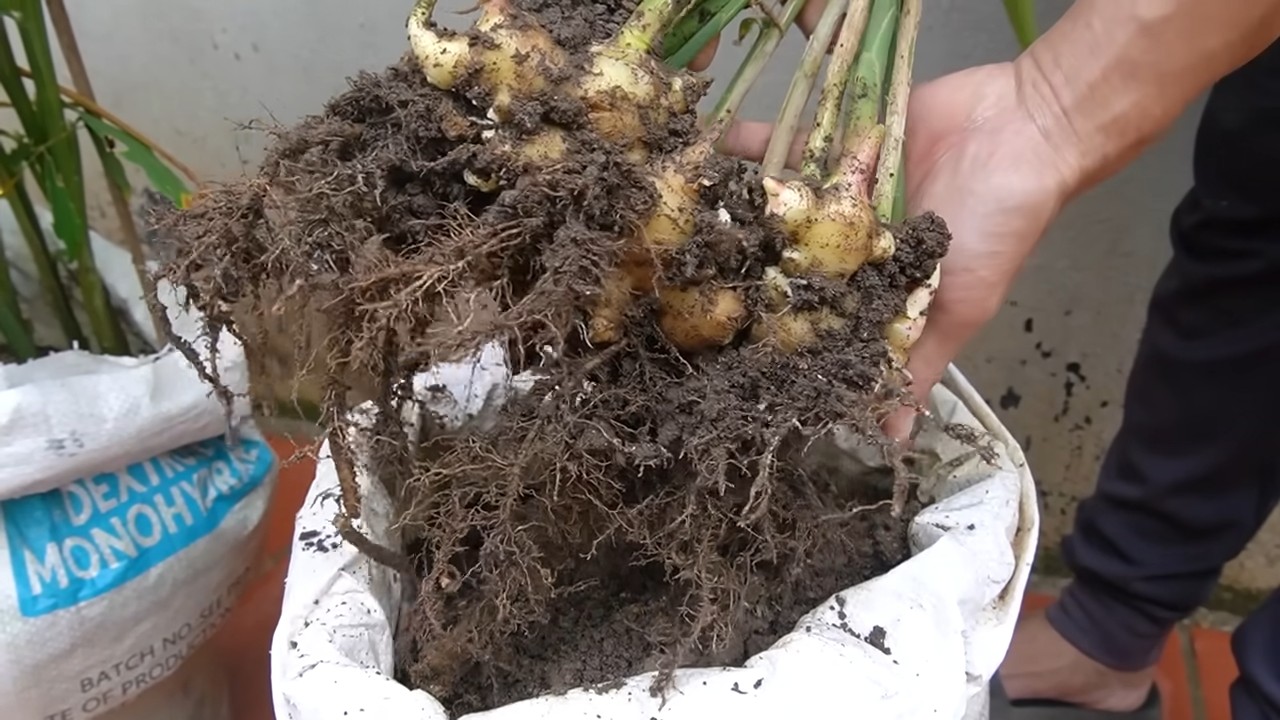
Grow Your Own Ginger: A Beginner’s Guide to a Bountiful Harvest
Hey there, fellow plant enthusiasts! Ever thought about growing your own ginger? It’s surprisingly easy and incredibly rewarding. Imagine having fresh, flavorful ginger right at your fingertips whenever you need it. No more trips to the store! I’m going to walk you through the entire process, from choosing the right ginger to harvesting your very own crop. Let’s get started!
Choosing Your Ginger Rhizome
The first step is selecting a healthy ginger rhizome (that knobby root-like thing you buy at the grocery store). This is your “seed” ginger. Here’s what to look for:
* Plump and Firm: Avoid rhizomes that are shriveled, soft, or mushy. You want one that feels solid and substantial.
* Healthy Buds (Eyes): Look for rhizomes with visible “eyes” or buds. These are the little bumps that will sprout into new shoots. The more eyes, the better!
* Organic is Best: While not essential, organic ginger is preferable. Non-organic ginger may have been treated with growth inhibitors to prevent sprouting during storage.
* Avoid Damage: Make sure the rhizome is free from cuts, bruises, or signs of mold.
Preparing Your Ginger for Planting
Before planting, we need to wake up those buds and give them a head start. This is called “chitting.”
1. Soaking the Rhizome: Soak your ginger rhizome in lukewarm water for 12-24 hours. This rehydrates the ginger and encourages those buds to swell.
2. Cutting (Optional): If you have a large rhizome with multiple eyes, you can cut it into smaller pieces, ensuring each piece has at least one or two healthy buds. Let the cut surfaces callous over for a day or two before planting to prevent rot. I usually just plant the whole thing if it’s not too big.
3. Choosing the Right Pot: Select a wide, shallow pot or container. Ginger roots grow horizontally, so a wide pot is more important than a deep one. A pot that’s at least 12 inches wide and 6-8 inches deep is a good starting point. Make sure it has drainage holes!
4. Preparing the Soil: Ginger needs well-draining soil that’s rich in organic matter. A good mix is equal parts potting soil, compost, and perlite or vermiculite. This will provide the nutrients and drainage your ginger needs to thrive.
Planting Your Ginger
Now for the fun part – getting your ginger in the ground!
1. Fill the Pot: Fill your pot with the prepared soil mix, leaving a couple of inches of space at the top.
2. Planting the Rhizome: Place the ginger rhizome on top of the soil, with the buds facing upwards.
3. Covering the Rhizome: Gently cover the rhizome with about 1-2 inches of soil. Don’t bury it too deep!
4. Watering: Water the soil thoroughly until water drains out of the bottom of the pot.
5. Finding the Right Location: Place your pot in a warm, bright location with indirect sunlight. Ginger loves warmth and humidity, but direct sunlight can scorch the leaves. An east-facing window is ideal.
Caring for Your Ginger Plant
Consistent care is key to a successful ginger harvest.
1. Watering: Keep the soil consistently moist, but not soggy. Water when the top inch of soil feels dry to the touch. Overwatering can lead to root rot, so be careful!
2. Humidity: Ginger thrives in humid environments. If you live in a dry climate, you can increase humidity by misting the leaves regularly or placing the pot on a tray filled with pebbles and water. Just make sure the bottom of the pot isn’t sitting directly in the water.
3. Fertilizing: Feed your ginger plant every 2-3 weeks with a balanced liquid fertilizer diluted to half strength. This will provide the nutrients it needs to grow strong and healthy. I like to use an organic fertilizer.
4. Temperature: Ginger prefers temperatures between 65°F and 85°F (18°C and 29°C). Protect your plant from frost and cold drafts.
5. Pest Control: Keep an eye out for pests like aphids or spider mites. If you spot any, treat them with insecticidal soap or neem oil.
6. Patience is Key: It can take several weeks for the ginger to sprout, so don’t get discouraged if you don’t see anything happening right away. Just keep watering and providing the right conditions, and eventually, you’ll see those little green shoots emerge.
Harvesting Your Ginger
The moment we’ve all been waiting for!
1. When to Harvest: You can start harvesting ginger about 8-10 months after planting. The leaves will start to turn yellow and die back, indicating that the rhizomes are mature.
2. Partial Harvest: If you only need a small amount of ginger, you can carefully dig around the edges of the pot and harvest a few rhizomes, leaving the rest to continue growing.
3. Full Harvest: For a full harvest, gently dig up the entire plant, being careful not to damage the rhizomes.
4. Cleaning the Rhizomes: Wash the harvested rhizomes with water to remove any dirt or debris.
5. Storing Your Ginger: Freshly harvested ginger can be stored in the refrigerator for several weeks. Wrap it in a paper towel and place it in a plastic bag. You can also freeze ginger for longer storage.
Troubleshooting
Even with the best care, you might encounter some challenges. Here are a few common problems and how to fix them:
* Yellowing Leaves: This could be a sign of overwatering, underwatering, or nutrient deficiency. Check the soil moisture and adjust your watering schedule accordingly. Fertilize your plant if necessary.
* Root Rot: This is caused by overwatering and poor drainage. Make sure your pot has drainage holes and that the soil is well-draining. If you suspect root rot, repot your plant in fresh soil.
* No Sprouting: If your ginger hasn’t sprouted after several weeks, it could be due to several factors: the rhizome wasn’t viable, the soil is too cold, or the soil is too dry. Make sure you’re using a healthy rhizome, providing warmth, and keeping the soil consistently moist.
* Pests: Regularly inspect your plant for pests and treat them promptly with insecticidal soap or neem oil.
Enjoying Your Homegrown Ginger
Now that you’ve harvested your own ginger, it’s time to enjoy the fruits (or rather, roots) of your labor! Here are just a few ways to use your fresh ginger:
* Cooking: Add it to stir-fries, soups, curries, and other dishes for a warm, spicy flavor.
* Tea: Brew a soothing ginger tea by steeping slices of fresh ginger in hot water.
* Smoothies: Blend it into smoothies for a healthy and flavorful boost.
* Baking: Use it in gingerbread, cookies, and other baked goods.
* Pickling: Make pickled ginger to serve with sushi or other Asian dishes.
Propagating More Ginger
Once you’ve successfully grown ginger, you can easily propagate more plants from the rhizomes you harvest. Simply save a few healthy rhizomes and repeat the planting process. You’ll have a continuous supply of fresh ginger in no time!
Advanced Tips and Tricks
Want to take your ginger growing skills to the next level? Here are a few advanced tips and tricks:
* Ginger in the Garden: If you live in a warm climate, you can grow ginger directly in the garden. Choose a spot with partial shade and well-draining soil.
* Succession Planting: Plant ginger rhizomes every few weeks to ensure a continuous harvest throughout the year.
* Companion Planting: Plant ginger alongside other plants that benefit from its presence, such as tomatoes, peppers, and eggplant.
* Experiment with Varieties: There are many different varieties of ginger, each with its own unique flavor and characteristics. Experiment with different varieties to find your favorite.
Conclusion
Growing your own ginger is a rewarding and satisfying experience. With a little patience and care, you can enjoy a bountiful harvest of fresh, flavorful ginger right from your own home. So go ahead, give it a try! You might be surprised at how easy it is. Happy growing!
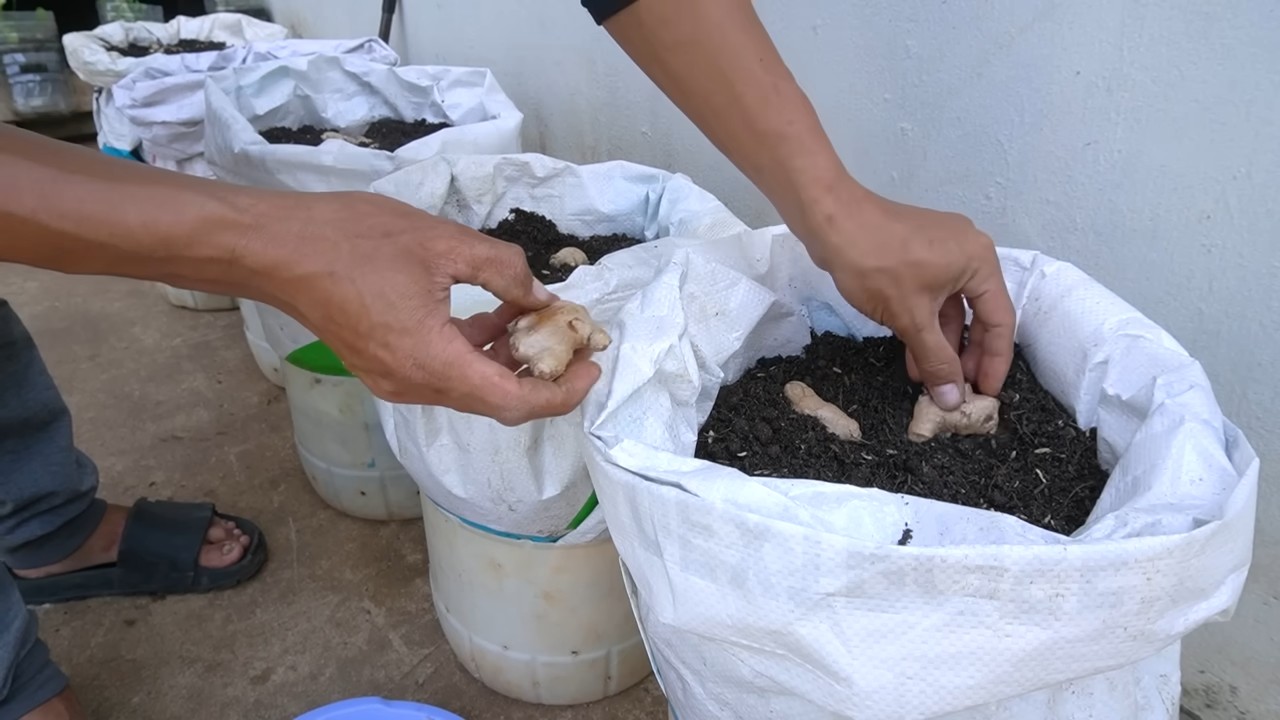
Conclusion
So, there you have it! Growing ginger at home is not only achievable, but it’s also a deeply rewarding experience that connects you to the source of this incredible spice. Forget relying solely on store-bought ginger, which can sometimes be less than fresh or even treated with chemicals. With a little patience and the simple steps outlined above, you can cultivate your own supply of vibrant, flavorful ginger right in your kitchen or garden.
Why is this DIY trick a must-try? Because it empowers you to control the quality and freshness of your ginger. Imagine the satisfaction of harvesting your own rhizomes, knowing exactly where they came from and how they were grown. The taste difference alone is worth the effort. Homegrown ginger boasts a more intense, aromatic flavor that will elevate your culinary creations to new heights. Think of the possibilities: freshly grated ginger in your stir-fries, soothing ginger tea brewed with your own harvest, or even candied ginger made from scratch.
Beyond the superior flavor, growing ginger at home is also a sustainable and cost-effective choice. You’ll reduce your reliance on commercially produced ginger, which often travels long distances and contributes to carbon emissions. Plus, once you have a thriving ginger plant, you can continually harvest and replant, ensuring a steady supply for years to come.
Looking for variations? Consider experimenting with different varieties of ginger. While common ginger (Zingiber officinale) is the most readily available, you might also explore growing galangal (Alpinia galanga) or turmeric (Curcuma longa), both of which belong to the same family and share similar growing requirements. You can also adjust the growing conditions to influence the flavor profile of your ginger. For example, growing ginger in partial shade will result in a milder flavor, while growing it in more sunlight will produce a spicier rhizome.
Don’t be afraid to get creative with your ginger cultivation. Try growing it in different types of containers, such as terracotta pots, raised beds, or even repurposed buckets. You can also experiment with different soil mixes to find the perfect blend for your growing environment. Remember to always prioritize good drainage to prevent root rot.
We wholeheartedly encourage you to embark on this exciting journey of growing ginger at home. It’s a simple yet profound way to connect with nature, enhance your culinary skills, and enjoy the unparalleled flavor of freshly harvested ginger. The process of growing ginger at home is easier than you think, and the rewards are immeasurable.
So, grab a ginger rhizome, follow our guide, and prepare to be amazed by the abundance you can create. We’re confident that you’ll find this DIY project both enjoyable and incredibly rewarding.
Now, we want to hear from you! Have you tried growing ginger at home before? What challenges did you face, and what tips would you share with other aspiring ginger growers? Share your experiences, photos, and questions in the comments below. Let’s create a community of passionate ginger enthusiasts and learn from each other’s successes and failures. We can’t wait to see what you grow!
FAQ
What kind of ginger should I use to start growing?
You’ll want to use a fresh ginger rhizome from the grocery store or a local farmer’s market. Look for a piece that is plump, firm, and has visible “eyes” or buds. Organic ginger is often recommended, as it’s less likely to have been treated with growth inhibitors. Avoid ginger that is shriveled, moldy, or has soft spots. The fresher and healthier the rhizome, the better your chances of successful germination.
How long does it take for ginger to sprout?
Sprouting time can vary depending on several factors, including temperature, humidity, and the freshness of the ginger rhizome. Generally, it takes anywhere from 2 to 6 weeks for sprouts to emerge. To speed up the process, you can soak the ginger in water overnight before planting. Keep the soil consistently moist but not waterlogged, and maintain a warm environment. Patience is key!
What kind of soil is best for growing ginger?
Ginger thrives in well-draining, nutrient-rich soil. A good mix would be equal parts potting soil, compost, and perlite or vermiculite. The potting soil provides a base, the compost adds essential nutrients, and the perlite or vermiculite improves drainage and aeration. Avoid heavy clay soils, as they can retain too much moisture and lead to root rot. You can also amend your soil with organic matter like aged manure or leaf mold to further enhance its fertility.
How much sunlight does ginger need?
Ginger prefers partial shade, especially in hot climates. Direct sunlight can scorch the leaves and damage the rhizomes. Aim for a location that receives morning sun and afternoon shade, or dappled sunlight throughout the day. If you’re growing ginger indoors, place it near a bright window but away from direct sunlight. You can also use sheer curtains to filter the light.
How often should I water my ginger plant?
Water your ginger plant regularly, keeping the soil consistently moist but not waterlogged. The frequency of watering will depend on the climate, the type of soil, and the size of the container. Check the soil moisture level regularly by sticking your finger into the soil. If the top inch feels dry, it’s time to water. Avoid overwatering, as this can lead to root rot. During the dormant season (winter), reduce watering frequency.
When is the best time to harvest ginger?
You can start harvesting ginger about 8-10 months after planting. The leaves will start to turn yellow and die back, indicating that the rhizomes are mature. To harvest, gently dig around the plant and lift the rhizomes from the soil. You can harvest the entire plant or just take a few pieces, leaving the rest to continue growing. Freshly harvested ginger has a thinner skin and a more delicate flavor than store-bought ginger.
Can I grow ginger indoors?
Yes, you can absolutely grow ginger indoors! In fact, it’s a great way to enjoy fresh ginger year-round, especially if you live in a colder climate. Choose a large pot with good drainage, use a well-draining soil mix, and provide plenty of indirect sunlight. Water regularly, and fertilize every few weeks with a balanced liquid fertilizer. You may also need to provide extra humidity, especially during the winter months when indoor air tends to be dry.
What are some common problems when growing ginger?
Some common problems when growing ginger include root rot, pests, and nutrient deficiencies. Root rot is caused by overwatering and poor drainage. To prevent it, ensure your soil is well-draining and avoid overwatering. Pests like aphids and spider mites can also attack ginger plants. Inspect your plants regularly and treat any infestations promptly with insecticidal soap or neem oil. Nutrient deficiencies can cause yellowing leaves or stunted growth. Fertilize your plants regularly with a balanced liquid fertilizer to provide them with the nutrients they need.
How do I store freshly harvested ginger?
Freshly harvested ginger can be stored in several ways. You can wrap it in a paper towel and store it in the refrigerator for up to a few weeks. You can also freeze it whole or grated. To freeze whole ginger, simply wrap it tightly in plastic wrap and place it in the freezer. To freeze grated ginger, spread it out on a baking sheet lined with parchment paper and freeze until solid. Then, transfer the frozen ginger to a freezer bag or container. You can also pickle ginger in vinegar or brine for longer-term storage.
Can I grow ginger from store-bought ginger?
Yes, you can grow ginger from store-bought ginger, but it’s important to choose the right piece. Look for a rhizome that is plump, firm, and has visible “eyes” or buds. Organic ginger is often recommended, as it’s less likely to have been treated with growth inhibitors. Avoid ginger that is shriveled, moldy, or has soft spots. Soak the ginger in water overnight before planting to encourage sprouting.


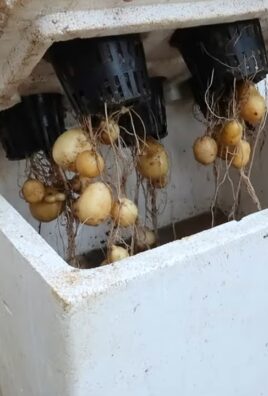
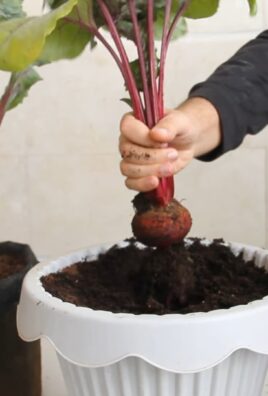
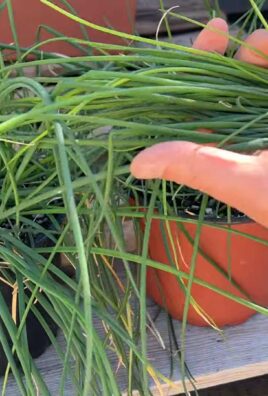
Leave a Comment